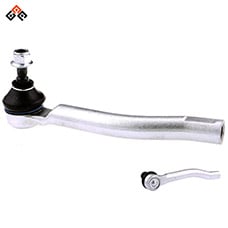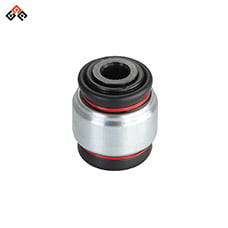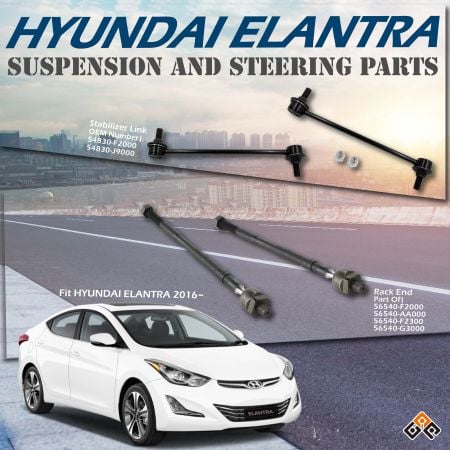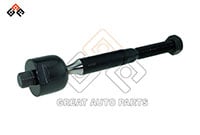Tie Rod Ends and Tie Rod End Boots in Protecting Steering System
Function of the Tie Rod End Boot
A tie rod end boot is a protective cover, typically made from rubber or other similar materials, designed to fit over the tie rod end. Its primary purpose is to shield the tie rod end from harmful contaminants like dirt, water, and road debris, which can accelerate wear and damage. Additionally, the boot retains lubricating grease inside the tie rod end, ensuring that the steering system operates smoothly and the component lasts longer.
Connection with Tie Rod End
The tie rod end boot is securely attached to the tie rod end, usually held in place by a metal ring or clamp. This connection ensures that the boot remains firmly in position, sealing the tie rod end and providing consistent protection from external elements. Without a proper seal, dirt and moisture could infiltrate, leading to steering issues and premature failure.
Materials Used in Tie Rod End Boots: A Breakdown
| Material | Advantages | Disadvantages |
| Chloroprene Rubber (CR) | Good resistance to sunlight, ozone, weathering, oil, and many chemicals
|
Not as durable for heavy
|
| Polyurethane Rubber (PU, AU, EU) |
Excellent wear resistance, high tensile strength, and elasticity
|
AU type susceptible to hydrolysis in the presence of moisture
|
| Neoprene |
|
|
| Polyurethane |
|
|
| Thermoplastic Elastomers |
|
|
Polyurethane: Advantages and Disadvantages for Tie Rod End Boots
Polyurethane rubber can be categorized into three main types: polyester polyurethane (AU), polyether polyurethane (EU), and thermoplastic polyurethane (TPU). Each type has its unique characteristics, which influence their suitability for different applications.
Advantages of Polyurethane
Polyurethane is a popular material for tie rod end boots due to its unique properties.
- Durability: Polyurethane is highly durable and resistant to wear and tear, making it suitable for vehicles exposed to rough conditions. It has a longer lifespan compared to traditional rubber.
- Tensile Strength: This material offers superior tensile strength and tear resistance, which reduces the risk of ripping or puncturing under stress.
- Abrasion Resistance: Polyurethane is exceptionally resistant to abrasion, making it an excellent choice for environments where the boots are exposed to rough surfaces or debris.
- Temperature Tolerance: It can withstand a wide range of temperatures without degrading, making it ideal for high-performance applications and areas with extreme weather.
- Chemical Resistance: Polyurethane resists oils, chemicals, and other contaminants, helping the boot maintain its integrity in a variety of environments.
In addition to the general strengths of polyurethane, polyether polyurethane (EU) is specifically known for its resistance to hydrolysis, making it more suitable for applications where moisture exposure is a concern. This makes EU preferable in environments where condensation might be present, as it provides stability against degradation.
Disadvantages of Polyurethane
Despite its many benefits, polyurethane does have some drawbacks that need to be considered:
- Flexibility: Polyurethane is less flexible than rubber, which can make it harder to install and may not provide as tight a seal in certain applications.
- Cost: Polyurethane boots are generally more expensive than rubber or other materials, which may be a concern for budget-conscious consumers.
- Stiffness: The stiffness of polyurethane can lead to a harsher ride quality, as it does not absorb vibrations as well as softer materials like rubber.
- Installation Difficulty: Due to its rigidity, polyurethane can be more challenging to install compared to more flexible materials like rubber, making the replacement process more time-consuming.
Additionally, polyester polyurethane (AU) has the disadvantage of being susceptible to hydrolysis, meaning it can degrade in the presence of moisture. This limits its use in applications with high humidity or where water is likely to come into contact with the material.
Material Properties: Why the Right Choice Matters
- Durability and Wear Resistance: Polyurethane and chloroprene rubber (CR) offer superior durability and wear resistance. Polyurethane, with its high tensile strength, resists tearing and withstands mechanical stress, making it suitable for heavy-duty vehicles and challenging terrains. CR, with its toughness, is also widely used in the automotive industry.
- Environmental Resistance: Both polyurethane and chloroprene rubber are excellent at resisting oils, chemicals, and weathering. Chloroprene rubber, specifically, provides good resistance to sunlight, ozone, and various chemicals, making it ideal for applications where the boots face harsh environments and constant exposure to contaminants.
- Temperature Tolerance: Polyurethane and CR can both handle a wide range of temperatures without breaking down. This temperature tolerance is crucial for high-performance vehicles and applications that operate in extreme conditions.
- Flexibility and Sealing: Materials like chloroprene rubber offer good flexibility, which allows for a tight seal around the tie rod end. This is essential for keeping out dirt and moisture, ensuring that the joint stays properly lubricated.
Common Signs of Worn Tie Rod End Boots
If a tie rod end boot is damaged or worn, you may notice:
- Cracks or tears in the boot material
- Unusual noises while turning
- Stiff steering or difficulty maintaining control
- Uneven tire wear

Why Regular Maintenance of Tie Rod End Boots is Important
Regular inspection and proper maintenance of the tie rod end boots can extend the life of your steering components. This includes ensuring that the boots remain intact and that the joints are properly greased. In regions with extreme weather, applying silicone spray a few times a year can help preserve the boot’s flexibility and prevent cracking.
Replacing Tie Rod End Boots
- DIY Replacement: You can replace worn tie rod end boots yourself using repair kits. It’s essential to ensure that the replacement boots are the correct size and material for your vehicle.
- Professional Replacement: If you're not confident in replacing the boots yourself, a mechanic can handle it for you. Replacement boots are generally affordable, and getting them replaced promptly can prevent more significant steering issues.
Upgrade Your Infiniti’s Handling with High-Quality Tie Rod Replacements
When it’s time to replace your tie rods, selecting the right components can significantly improve your Infiniti’s handling and ensure lasting reliability. Here’s why Great Auto Parts tie rod ends are an excellent choice for enhancing your vehicle:
- Built to Last: Manufactured from high-strength steel using advanced forging techniques for durability.
- Corrosion-Resistant: Each tie rod end is treated to resist rust, providing long-term protection.
- Improved Flexibility: Designed with a wide swing angle of at least 60 degrees for better steering control.
- Exceptional Strength: Meets or exceeds original equipment standards for superior durability.
- Seamless Fit: Designed to perfectly replace the original tie rod ends, ensuring a hassle-free installation.
- Small Order Flexibility: With a minimum order of just 30 pieces, small businesses can easily access high-quality parts.
Choose Great Auto Parts for a smoother driving experience and reliable performance in your Infiniti.






